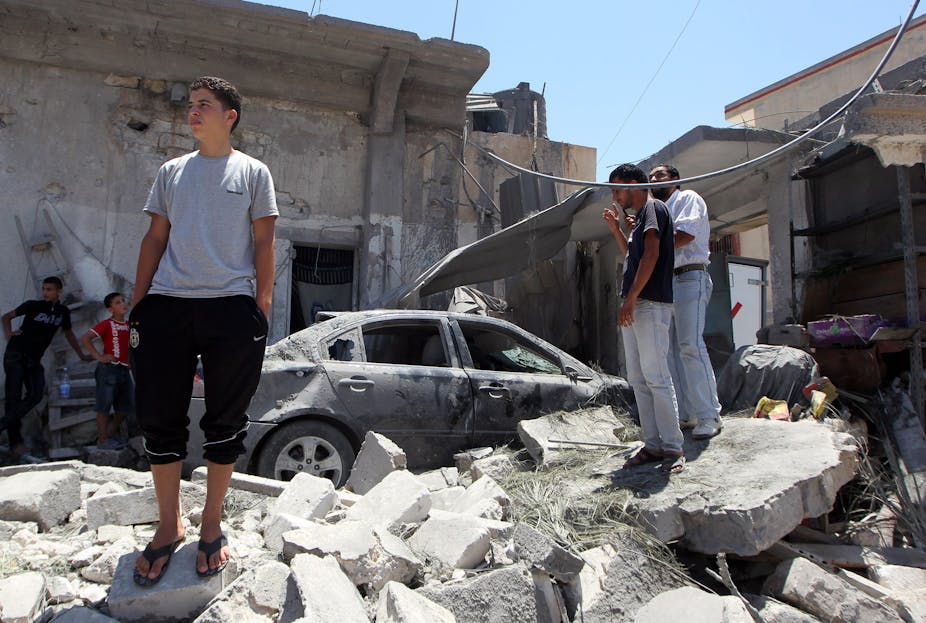Last year – for the first time in modern history – Asia outspent Europe on their militaries. The true significance of this milestone lies in how easily the Asian countries were able to achieve it.
There is no arms race in Asia. Over the past decade, most Asian nations have consistency spent roughly the same percentage of their GDP on defence. In other words, the growth in the military potency of Asia is simply a reflection of the region’s rising economic strength.
Europe is heading in the opposite direction. Many Western European economies are in deep trouble and, as a consequence, military spending is being heavily cutback.
Britain, for instance, is in the process of cutting 25,000 armed forces personnel and 29,000 civilian staff by 2015. It is also decommissioning its only aircraft carrier, all its Harrier jets, 40 percent of its tanks and artillery and delaying the purchase of its new Trident nuclear submarines.
Who pays the piper
This global power shift and Europe’s economic troubles are the big picture backdrop to this week’s NATO summit in Chicago. Over two days, 51 heads of state will meet to discuss strategy and haggle over who will pay the bills. It is likely to be more the latter than the former.
The immediate issue in Chicago will be the future of Afghanistan. There has been intense disagreement over the past few months between Washington and Brussels over how the Afghan bill will be split.

After the NATO and partner countries withdraw, it has been estimated that just over $6 billion will be required to maintain the Afghan security forces and ensure that the Afghan government is not overthrown by a Taliban and anti-government forces. Washington is pushing for an even split, while the Europeans think that even a $4-$2 billion split is too steep.
An alliance too old?
The summit is also likely to provide some clues on the longer-term future of NATO itself.
The summit has been dubbed Chicago 2012: The Global Crossroads and indeed NATO has reached an historic crossroad. There are now two big picture questions facing NATO. The first is the future commitment of the European countries towards building expeditionary capabilities. The second question is the United States’ future commitment to the defence of continental Europe.
The NATO European powers have traditionally been focused on territorial defence. In the post-Cold War era, however, the United States has been encouraging and assisting its NATO partners to move to a more expeditionary military force. That is, a model more similar to the United States’ own military.
It was envisaged that the new NATO would be able to work together to better conduct operations in places like Bosnia and Afghanistan. It would rely heavily on technology, mobility and speed. NATO would begin to act outside of Europe, quickly confronting threats when and where they arise.
This vision has not been fully realised. Most European militaries continue to lack full interoperability with the United States and can only conduct limited joint or independent missions abroad. Even the limited Libyan intervention would have been a stretch for the European countries without United States’ assistance.
So, where will the cuts to European defence spending come from? Will they come from territorial defence capabilities or from the expeditionary side? So far, the cuts have generally come from the latter than the former. If this continues, it will decrease the usefulness of NATO to the United States.
Europe can look after itself. Sort of
The second, and related, big question hanging over the future of NATO is the United States’ commitment to the alliance partnership. Washington has announced that it will cut the number of American brigades permanently stationed in Europe from four to two.
This is for two reasons. First, it is a reaction to shifts in global power. Economic and military power is flowing from the West to the far East and America’s strategic focus is shifting along with it. Second, Europe is a strategically stable in a way that Asia is not.

Through American eyes, Europe is a relatively small, stable strategic environment, filled with reliable and capable allies that are not facing any serious security challenge. In contrast, Asia is vast area, filled with potential political cleavages, with relatively weaker allies that are separated by great distances and have less experienced in working together.
As such, it is unsurprising that the United States has announced new deployments in Australia, Singapore, and a redeployment of troops from Okinawa to Guam. It is also telling that many of the heads of state from the “Asian NATO” will also be attending in Chicago, including Australia, Japan, Malaysia, New Zealand and Singapore.
Although Europe remains the most important region to the security of the United States, it is not as important as it used to be. Moreover, it is likely to be less important still in the future.

